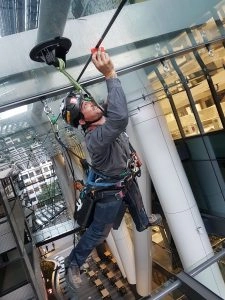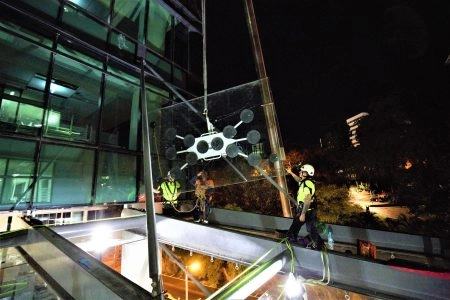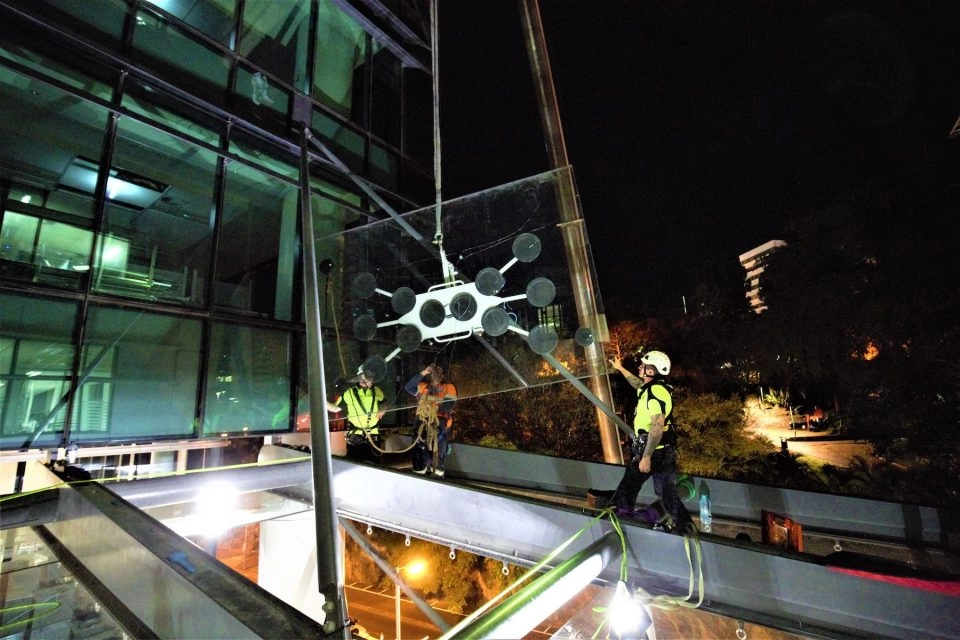Last Updated on January 28, 2021 by Admin
Table of Contents
What to know about becoming a Qualified Rope Access Technician for your trade or profession.
If you’ve been in the trade industry for a long time, there’s a good chance you’re looking for a way to spice things up. After all, it’s normal for most people to change professions at least 5 times in their career, and it’s no different for tradies. But you don’t have to change your profession to keep your job interesting or to simply further your career prospects within your field of work.

Becoming a Rope Access Technician is a viable career choice for most trades to pivot into. While dangling from a rope hundreds of meters in the air from the top of a building springs to mind, it’s not always the case. There’s a variety of roles needed for qualified rope access technicians that can be a challenging and rewarding career option for those eager for a change of pace.
Let’s take a quick look into the different types of trades and industries that require Rope Access Technicians, the skills required, and what additional training you’d need to make your way into this exciting industry.
What jobs are available for people with trades in the Rope Access Industry?
There’s a high demand for a wide variety of trades to have rope access qualifications across Australia. Some of the common trades are:
- Electricians
- Welders
- Boilermakers
- Riggers
- Telecommunications
- Mechanical & Painters
- Engineering
- Window Cleaners and Facade Maintenance
- Carpentry
The more experience gained, the higher the pay. The industries that require rope access technicians are far-reaching. Whether it’s Oil and Gas, Mining and Power Industries, Construction, or cleaning and maintenance, the list is endless.
Essentially, if there’s something that needs to be built, installed, repaired, cleaned, or maintained that can’t be accessed from the ground or within the structure itself, a tradesman or professional with the relevant Rope Access Qualifications is needed.
How do I become a Qualified Rope Access Technician?
The Industrial Rope Access Trade Association (IRATA) is the world’s leading authority on industrial rope access and the only industrial rope access certification that is recognised worldwide. As such, for most major employers in Australia, Rope Access Technicians must have relevant IRATA Rope Access level 1, 2, or 3 qualifications.
It’s always good to check what other qualifications the employer may want. In addition to the IRATA Rope Access Qualifications, holding a Work safely at heights certificate is usually required. The good news is that this is usually obtained whilst undertaking the IRATA Rope Access training.

What does the IRATA Rope Access Training cover?
The IRATA Rope Access Training is designed to provide knowledge and skills to workers who’ll be performing work while suspended in a vertical environment. It’s 5 days in total, with the first four days consisting of training, with the fifth and final day consisting of a theoretical and practical assessment.
Some of the areas covered by the training include planning and management, risk assessment and hazard avoidance, equipment selection, anchor systems, and knots, rope maneuvers and Climbing techniques, raising and lowering systems, and more.
There’s also a range of typical work scenarios that are covered including high-rise window cleaning, Painting or maintenance, Industrial abseiling, Work on power stations, mines, bridges, cliffs, and offshore plants.
Are There Any Prerequisite Entry Requirements?
As you’d expect, there’s a range of prerequisite requirements for people with the aim of working in a vertical environment. Candidates must have an aptitude for working at height,
be medically and physically able to perform various tasks, and able to withstand various weather situations that will undoubtedly occur. Another main requirement for candidates is that they are required to have sound Language, Literacy, and Numeracy (LLN) skills. This is vital as Rope Access Technicians will be required to read and understand risk assessments and work instructions for every job they undertake.
Can I get Level 2 or Level 3 IRATA Qualification straight away?
Unfortunately not. The IRATA Rope Access Training is designed to be undertaken sequentially, with the levels indicating the experience gained from technicians during their hours logged in the field.
Level 2 Rope Technician entry requirements require a minimum of 12 months experience at Level 1 and 1000 working hours logged. Level 3 Rope Technician entry requirements include a minimum of 12 months experience at level 2 and two years and 2,000 hours logged. Each job you apply for will have
Learn more about Becoming a Qualified Rope Access Technician.
Find out more about the jobs a Rope Access company undertakes over at Apex Facades’ website – apexfacades.com.au.
If you’d like to find out more about becoming a Qualified Rope Access Technician, visit the IRATA website today – irata.org. Or if you’d like to go ahead and book a training course, there’s IRATA approved training venues across Australia, simply visit their website to find the nearest one to you.


